Convection oven roast turkey is the best way to get crispy, golden skin with the juiciest, most tender meat. It’s a fool-proof method for how to cook the perfect turkey every time, with no basting required. And, it takes less time than a conventional oven. It’s easy to prepare and is sure to impress!
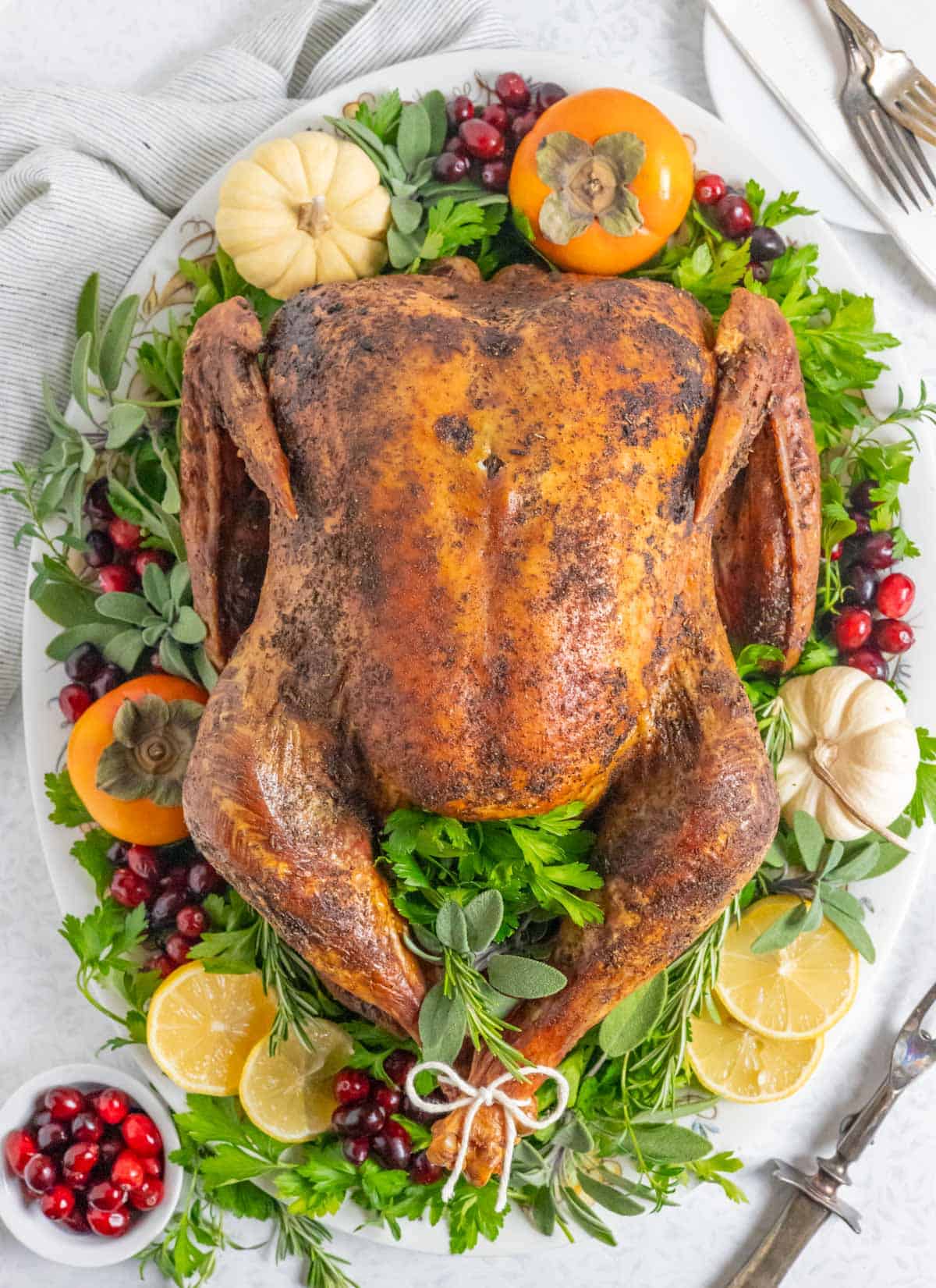
Jump to:
- Convection oven vs conventional oven
- How long to cook a turkey in a convection oven
- Temperature to cook a convection oven turkey
- How long does it take to thaw a turkey?
- Should I rinse a raw turkey?
- Stuffing a turkey
- Ingredients
- How much turkey per person?
- Instructions
- Expert tips
- Do I need to brine in salt water?
- Do I have to truss a turkey?
- How long to rest a turkey
- Favorite turkey side dishes
- What to make with leftover turkey
- What to do with the turkey carcass and leftover bones
- FAQ
- Other poultry recipes you might like
- 📖 Recipe
- 💬 Comments
A truly mouthwatering holiday turkey is undoubtedly the centerpiece of the table. You’ll be amazed at how simple it is to use your convection oven to make the most stunning and delicious, juicy, golden brown, crispy skin turkey.
Do you have a convection oven and tend to not use the convection feature? Me too. Well, that is until I tried it for a few recipes and now I use it with almost every recipe, especially baking whole roasted chicken and turkey. Once you roast your Thanksgiving or Christmas turkey using convection, there’s no going back. Trust me.
Serve this with Sugar-Free Cranberry Jam or this delicious Tomato Chilli Jam as a cranberry sauce alternative, and low-carb and low-FODMAP sides including Brussels Sprouts with Maple and Rosemary, or some buttery Colcannon made with rutabagas as a low-carb potato replacement.
Convection oven vs conventional oven
A convection oven circulates dry, hot air around the food, very similar to an air fryer. This creates even cooking and results in faster cooking time – up to 30-40% faster than a conventional oven. This air circulation eliminates ‘hot spots’ and provides even heat. Because it circulates hot air around the bird, it essentially sears the skin, sealing and locking in all of the juices. For this reason, there's no need for basting. You get tender, succulent, juicy dark and white meat, cooked to perfection.
Convection ovens also have an exhaust system that vents moisture out of the oven, which helps create that crispy turkey skin.
How long to cook a turkey in a convection oven
Cooking time depends on the size of your bird. Internal temperature is determined by inserting a meat thermometer into the thickest part of the thigh and breast, without touching the bone. According to the USDA, internal temperature for turkey should reach 165°F. It’s best to test the temperature in multiple places on the bird – the breasts and the thighs on both sides. If you stuff your bird with conventional stuffing, be sure to temp the stuffing to verify it’s also reached 165°F.
Cooking times in a convection oven at 325°F
- 12-15 pounds, takes approximately 1.5 - 2 hours
- 15-20 pounds, takes approximately 2 - 2.5 hours
- 20-25 pounds, takes approximately 2.5 - 3.5 hours
Cook time will vary, depending on the brand of oven and if the bird is stuffed.
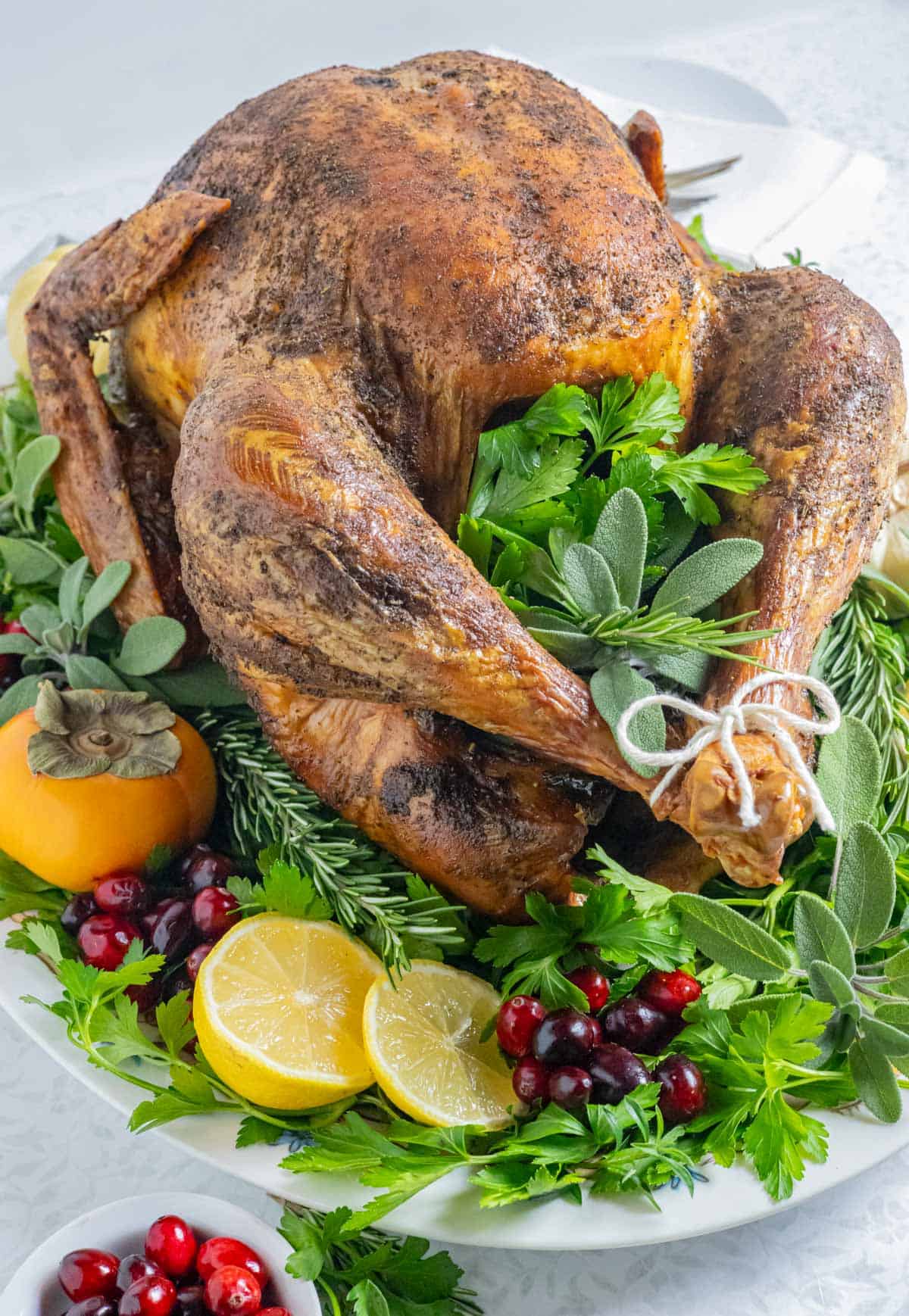
Temperature to cook a convection oven turkey
On the convection setting it should be cooked at a lower temperature (325°F), where roasting in a conventional oven is typically done at a higher temperature (350°F).
It’s best to place it on the lowest rack, where the bird itself will be centered in the oven.
How long does it take to thaw a turkey?
Thawing a turkey can be done in two ways:
- In the refrigerator – it’s recommended to thaw under refrigeration to prevent bacterial growth. It takes about 24 hours for each 5 pounds. For example, to thaw a 20 pound bird, it will take about 4 days in an uncrowded refrigerator. If your fridge is full, add at least an extra day. After thawing, it will stay safe for another two days before cooking.
- Submerged in cold water – it will take about 30 minutes per pound and the water will need to be changed every 30 minutes to maintain proper temperature. Once it’s thawed, it will need to be cooked immediately.
I do not recommend thawing in the microwave. Some parts will get overheated and partially cooked before going into the oven. Microwaving can also change the texture of the meat.
Visit the USDA for more information on how to safely thaw a turkey.
Should I rinse a raw turkey?
No – you do not need to and should not rinse your raw turkey unless it has been sitting in a brine solution. Rinsing meat provides no benefits for food safety or cooking. In fact, rinsing the bird can spread bacteria (cross-contamination) to your kitchen through juices that may splash onto surfaces and utensils.
The only time you should rinse a turkey is if you have soaked it in a brine. Rinsing after brining helps to remove excess salt from the surface of the skin and meat.
Stuffing a turkey
If you’re unsure of what to stuff your bird with, I have the perfect solution for you. Aromatic herbs, fruits and vegetables are one of the best options to place in the cavity when roasting. They infuse the meat with so much flavor and make the best drippings for gravy.
My favorite fresh aromatics are:
- Sage
- Parsley
- Thyme
- Onion (or leek for low-FODMAP)
- Garlic cloves (omit for low-FODMAP)
- Apple or pear (omit for low-FODMAP)
- Lemon or orange wedges – citrus pairs beautifully with poultry
- Carrot
- Celery
You can also stuff your bird with a savory stuffing mixture. It will take longer to cook and you must make sure the stuffing is at least 165°F before removing from the oven.
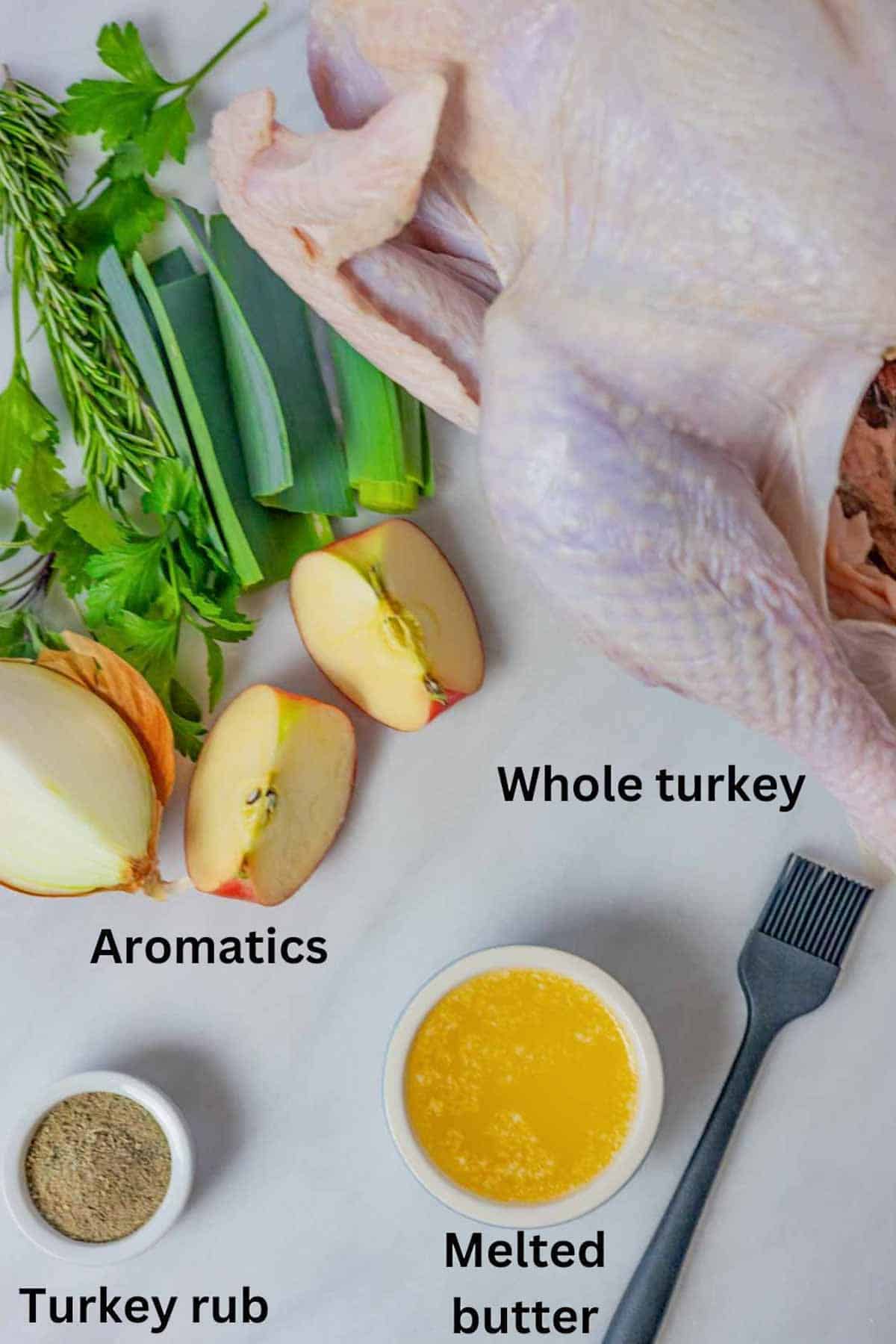
Ingredients
- Whole turkey – be sure it is fully thawed before cooking for best results
- Butter – adds flavor, holds the seasonings onto the skin and helps create a golden brown, crispy skin
- Turkey rub – I like to use my homemade all-purpose seasoning, or you can use your favorite poultry rub. If using single herbs, I suggest sage, basil, oregano, rosemary, garlic and onion powder (omit for low-FODMAP) salt and pepper. Try using a savory Coffee rub to add a deep, rich flavor.
- Fresh aromatics – to put in the cavity during roasting. The flavors steam and infuse into the meat. See above for my favorite aromatics.
How much turkey per person?
When selecting a bird, anticipate 1 - 1.5 pounds per guest. That may seem like a lot, but a significant amount is bone and will not get eaten. After roasting, a serving is about 8 ounces per person.
For example, a 20 pound bird should be enough to serve 15 guests.
Instructions
Learning how to prepare and roast a turkey with a convection oven is very simple:
Preheat the oven to 325°F on convection setting.
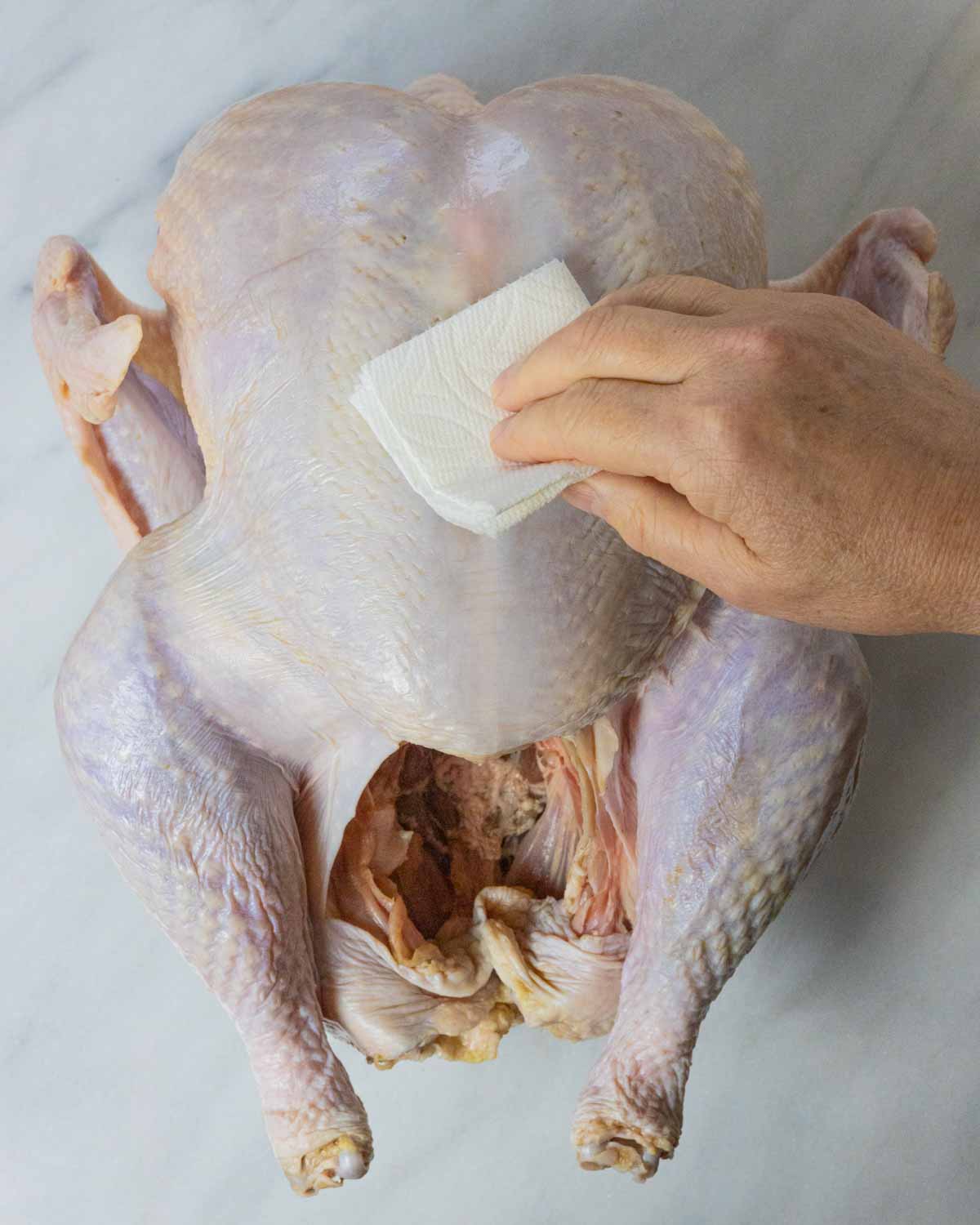
Pat the skin dry. This allows the butter to adhere to the surface.

Season the cavity with rub and stuff loosley with aromatics.

Brush with melted butter.
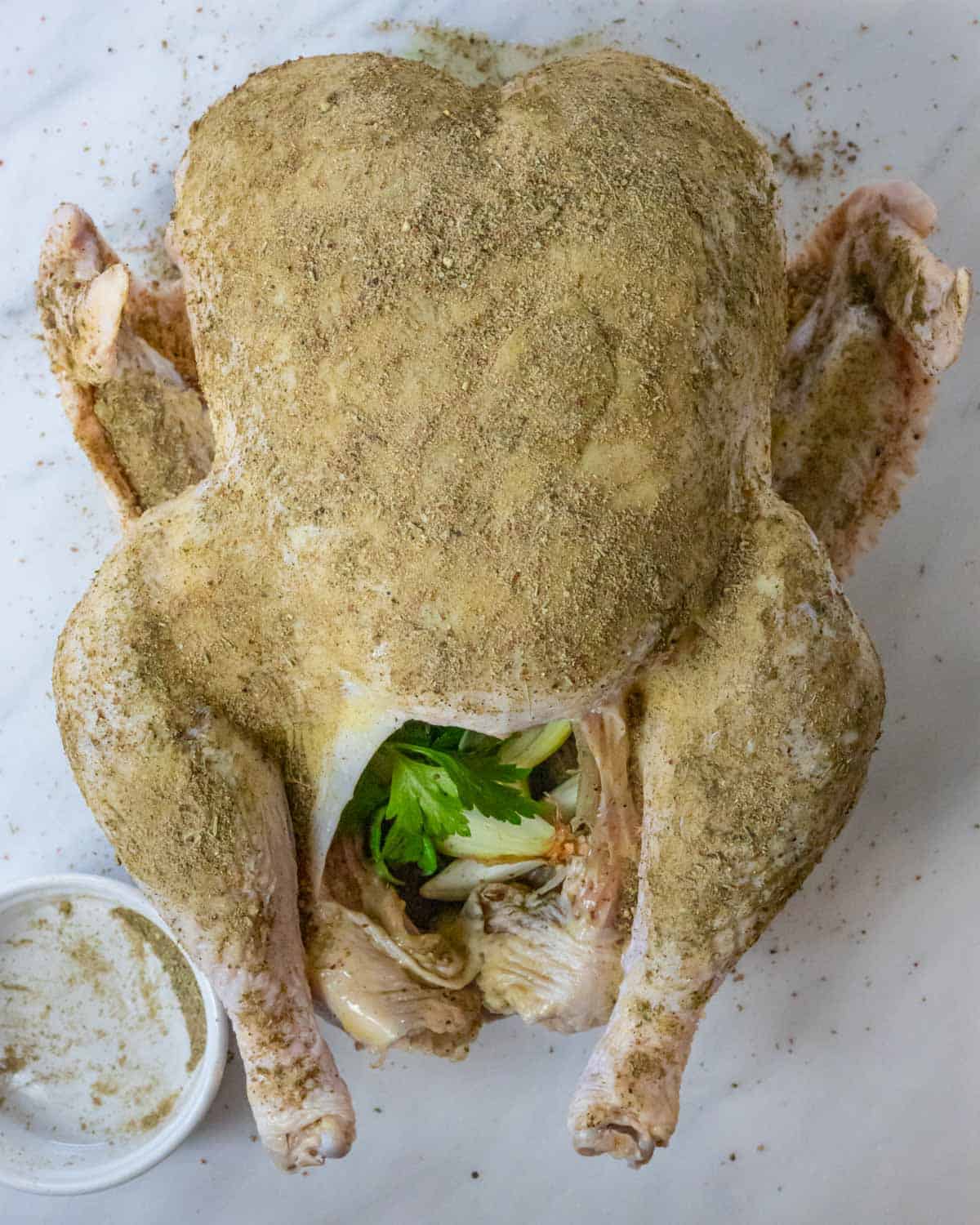
Sprinkle rub over the buttered skin.
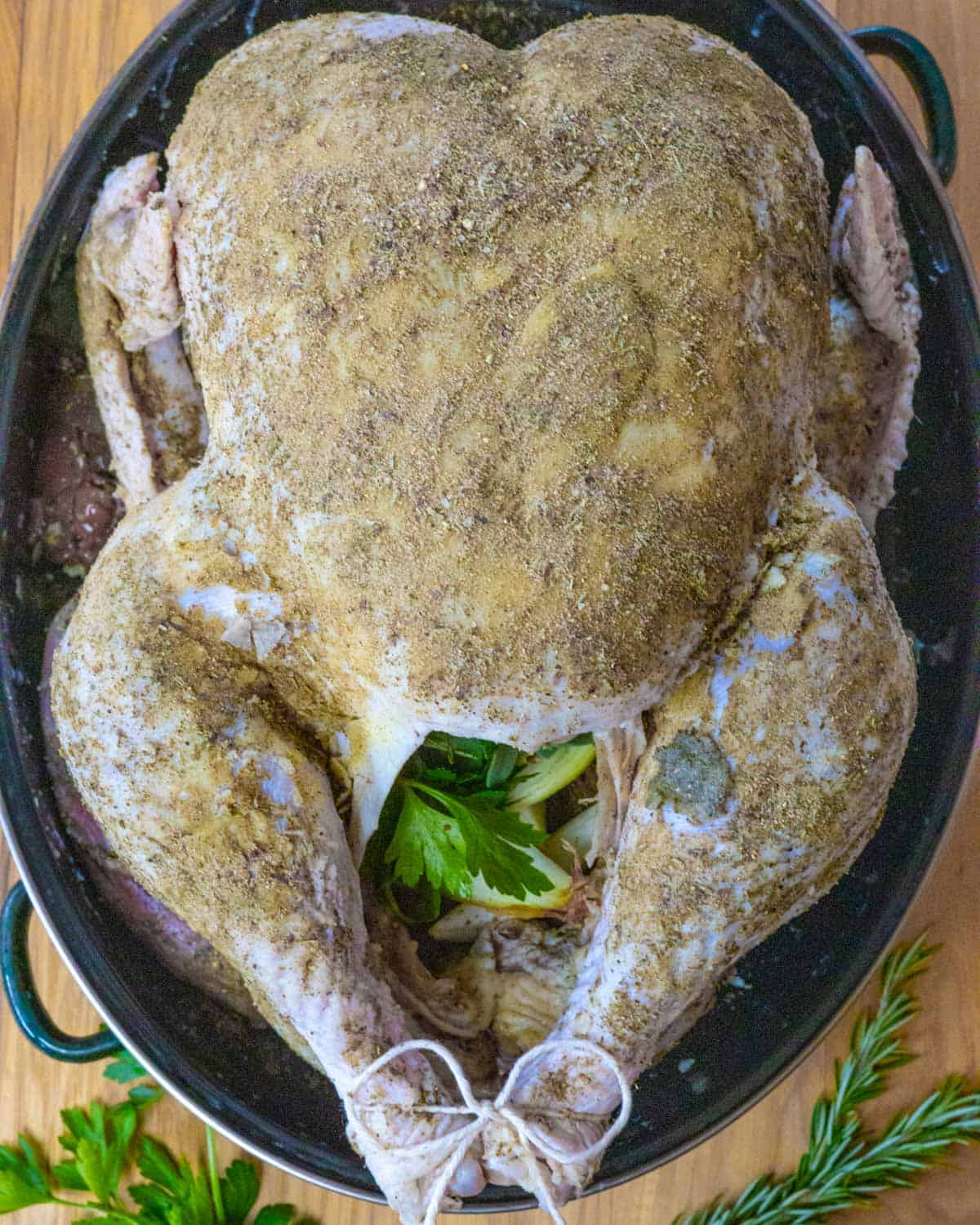
Optional: Truss the legs together by tying with kitchen twine. This is more for visual appeal than anything. It will cook evenly whether trussed or not.
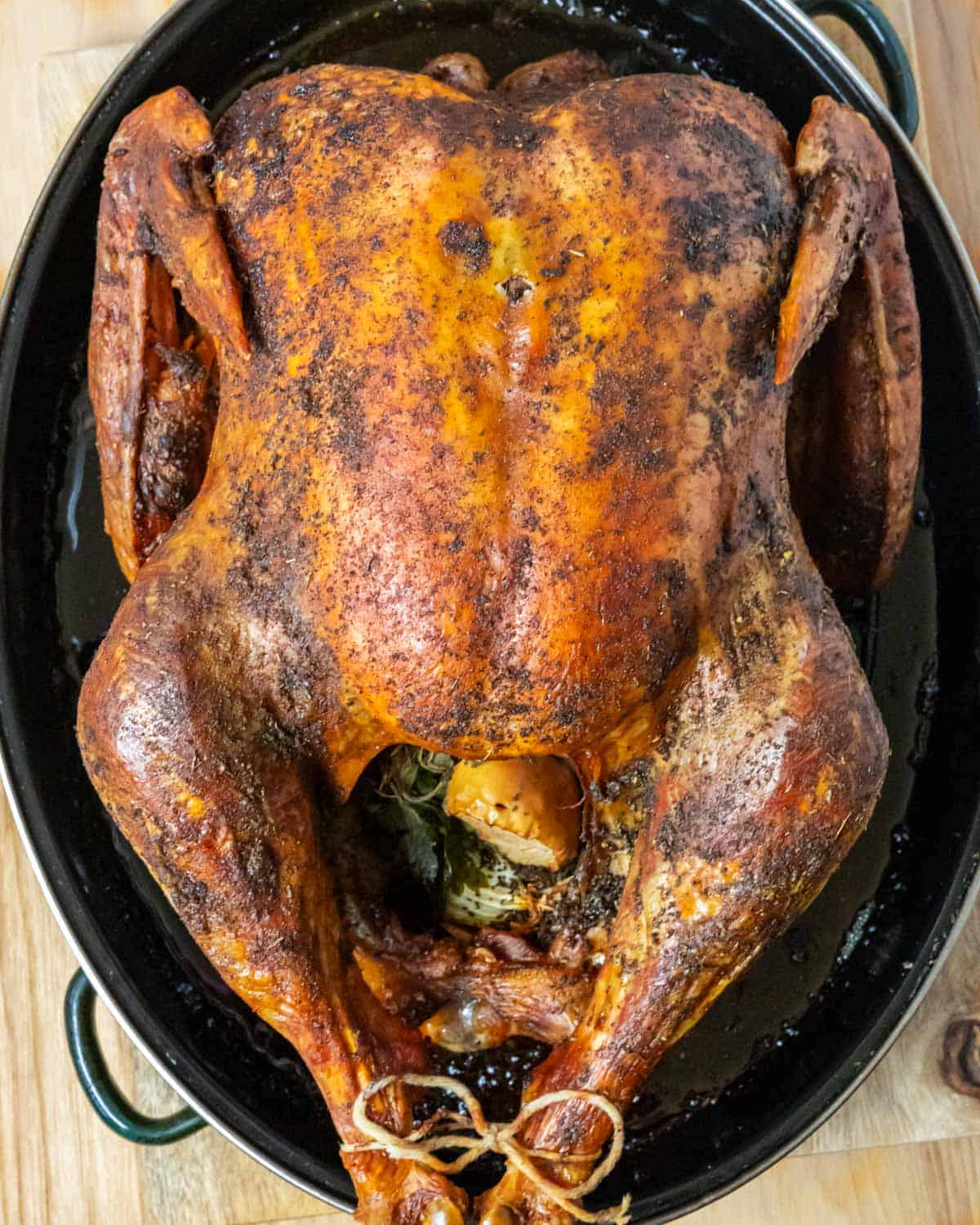
- When the internal temperature reaches 165°F, remove from the oven (see How Long To Cook A Turkey in a Convection Oven above for temp instructions
- Cover with foil and let rest for 20-30 minutes. See How Long To Rest a Turkey, below.
Expert tips
- If the skin begins to get too browned, cover those areas with foil during the cooking process. If you turn off the convection setting and simply use the roast setting, the temperature in the oven will decrease and the bird will take longer to cook.
- Start with a fully thawed bird. If it's slightly frozen on the inside, you can use the cold water thawing method to finish the thawing process. If the bird is still partially frozen when going in the oven, the exterior will get overcooked by the time the interior temperature reaches 165°F.
- Use a cold turkey for best results. It does not need to reach room temperature before preparing. The melted butter should have the opportunity to harden a bit on the skin before applying the rub.
Do I need to brine in salt water?
No – you do not need to brine a turkey before roasting. The convection oven will dry and seal the skin, holding in all of the juices.
Do I have to truss a turkey?
No – trussing with kitchen twine is not necessary. If you like the look, then truss the legs. There’s no benefit either way – it’s all about aesthetics.
How long to rest a turkey
It’s best to rest the bird for 20-30 minutes before carving. Tent with foil and let sit at room temperature. The temperature will continue to rise during part of the resting process, called carryover cooking. When the temperature begins to fall, the juices will re-absorb into the muscle fibers, making the meat tender and juicy. Resting also makes it easier to carve.
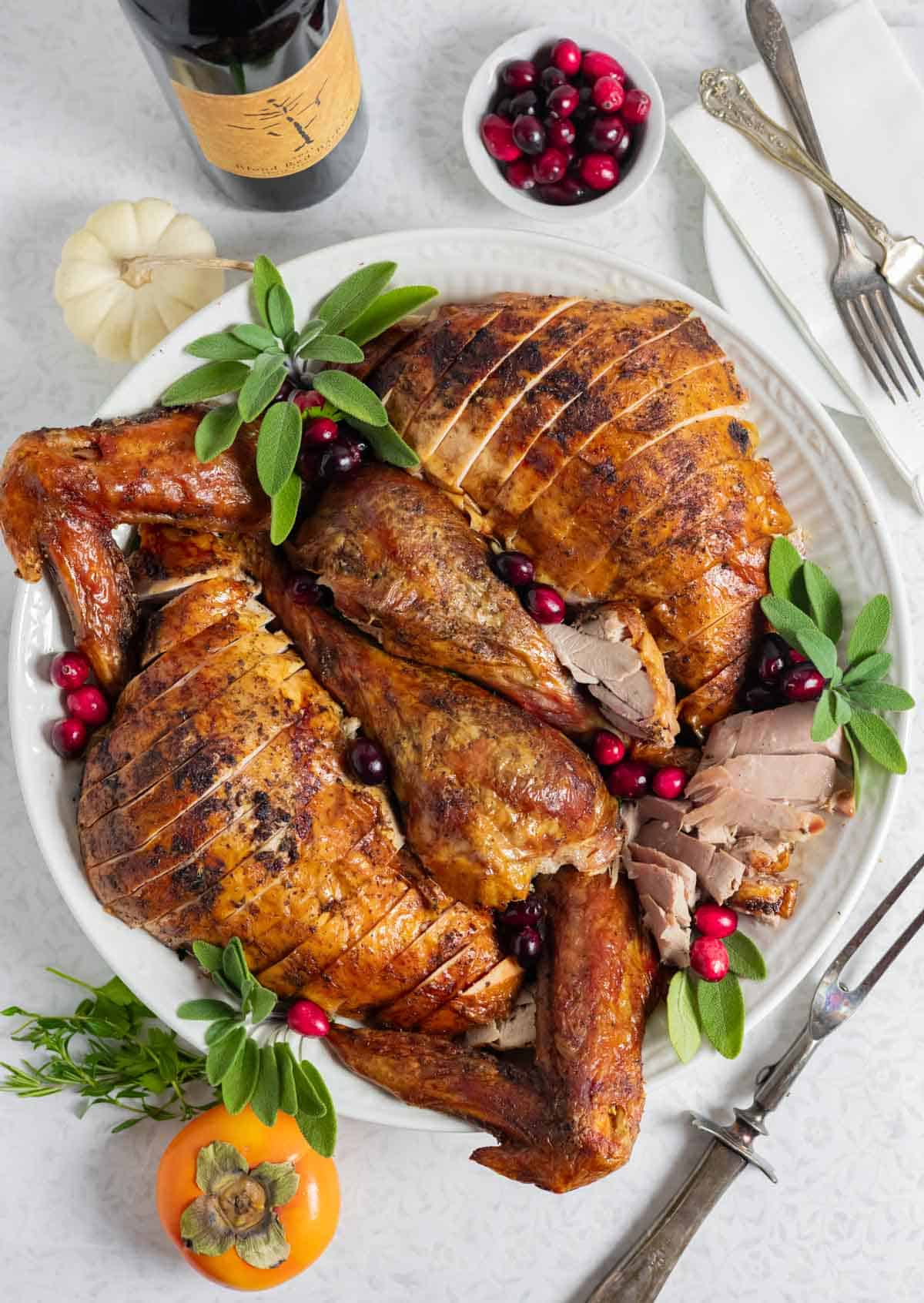
Favorite turkey side dishes
Once you have done the carving, it's ready to serve with some flavorful side dishes:
- Cranberry – cranberry sauce or jam is just meant to be paired with turkey. Skip the canned cranberry sauce and make your own Spiced Cranberry Jam to wow your guests.
- Low-carb potato substitutes – try these low-carb mashed potato alternatives that include buttery Colcannon made with rutabagas, Herb Roasted Rutabagas, or savory seasoned Cauliflower Rice.
- Salads – add some crisp, fresh greens. Try a Kale BLT Salad or add a global flair with a Lebanese Fattoush salad.
- Brussels sprouts – stovetop Sautéed Brussels Sprouts with Maple and Rosemary are a perfect complement to roasted poultry and are easy to make on the stovetop while the turkey is baking in the oven.
- Biscuits or Rolls – Low-carb Pull Apart Dinner Rolls or Cheesy Cheddar Drop Biscuits with Almond Flour are the perfect accompaniment to any dinner and are an easy make-ahead side.
What to make with leftover turkey
Here are just a few of my favorite dishes to make with leftovers:
- Turkey salad – this is my favorite thing! Chop up the leftovers into small chunks, and add some mayo, Dijon, salt, pepper, dried currants or cranberries, chopped pecans, pumpkin seeds or hemp seeds and mix. I also adore making a curry turkey salad by adding some homemade Tikka Masala Powder.
- Turkey hash – chop up and mix with butternut squash or spaghetti squash, green onions or leek, butter, salt and pepper and sautée. Top with Mexican Chimichurri and a fried egg. Total decadence!
- Sandwiches – serve on some Parmesan Oregano Bread or low-carb sandwich thins with Cranberry Jam and bacon for a delicious turkey cranberry sandwich
- Stir Fry – chop and use to make a Mediterranean Stir Fry
- Soup – turkey and dumplings and turkey lentil soup are perfect soups to cozy up with
- Savory pie – make a stovetop turkey pot pie for the best comfort food
- Marry Me Pasta – substitute chicken for turkey in this creamy Marry Me Chicken Pasta recipe for a quick one-pot meal.
What to do with the turkey carcass and leftover bones
Make broth, of course! See my recipe for how to make homemade bone broth. Just replace the chicken bones with turkey bones.
If you don’t want to use them immediately, package the leftover bones in a freezer bag and save for later. You don’t even need to thaw them before making the broth. Just put them in the pot with water and herbs and cook.
FAQ
You don’t need a roasting rack, but it’s recommended. When cooking a turkey in a convection oven, having the bird elevated allows air to circulate, ensuring even cooking. If you don’t have a roasting rack, you can use a sheet pan and a wire cooling rack to keep the bird above the bottom of the pan.
On the convection setting, the cooking temperature is most often set to 325°F, especially for a larger bird. Cooking at 350°F may cook the skin too fast, causing it to overcook.
Yes! It can be frozen for up to 6 months. If it’s frozen longer, it can lose its moisture and flavor.
Leftovers can last up to 4 days in the refrigerator. Refrigeration slows bacterial growth at 40°F or less, but does not stop it. If leftovers won’t be consumed in 4 days, consider freezing them.
After it has rested, according to Food Safety News, turkey should be refrigerated within two hours of cooking. Spoilage organisms thrive in the temperature danger zone, which is between 40°F-140°F.
Other poultry recipes you might like
Making a smaller meal? Try these other delicious recipes for your gathering:

Did you make this recipe? Let me know how you liked it by giving a star rating and leaving a comment!
📖 Recipe
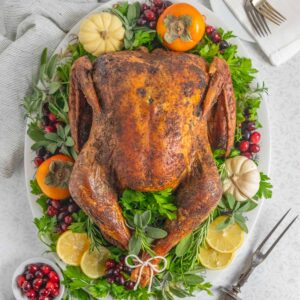
How to roast a turkey in a convection oven
Ingredients
- 1 whole turkey
- 8 tablespoons melted butter (Based on a 20 pound bird. Scale down if yours is smaller.)
- ¼ cup turkey rub (try this All-Purpose Seasoning or use your favorite poultry rub. Based on a 20 pound bird. Scale down if yours is smaller.)
- 1 pound fresh aromatics (whole herbs, spices, fruit and vegetables. See How to stuff in post for recommendations.)
Instructions
- Pre-heat oven to 325℉ on the convection setting.
- Pat the skin dry. This allows the butter to adhere to the surface.
- Season the cavity with the rub and stuff with aromatics.
- Brush the surface with melted butter.
- Sprinkle rub over the buttered bird.
- Transfer to a roasting pan with a roasting rack.
- Optional: Truss the bird. Tie the legs together with kitchen twine. This is more for visual appeal than anything. It will cook evenly whether trussed or not.
- Bake on convection until the internal temperature of the thickest portion of the thigh and breast (without touching the bone) all reach 165℉. This will take between 1.5-3.5 hours depending on the size of your bird. See How Long To Cook in a Convection Oven in post for approximate cooking times.
- Rest for 30 minutes before carving.
Notes
Expert tips
- If the skin begins to get too browned, cover those areas with foil during the cooking process. If you turn off the convection setting and use the roast setting, the temperature in the oven will decrease and the bird will take longer to cook.
- Start with a fully thawed bird. If it's slightly frozen on the inside, you can use the cold water thawing method to finish the thawing process. If the bird is still partially frozen when going in the oven, the exterior will get overcooked by the time the internal temperature reaches 165°F.
- Use a cold bird for best results. It does not need to reach room temperature before preparing. The melted butter should have the opportunity to harden a bit on the skin before applying the rub for the best adhesion.
Nutrition
*Net carbs = carbohydrates - fiber
Nutritional information is an estimate, calculated using online tools and does not include optional ingredients unless otherwise indicated.

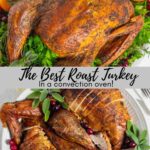
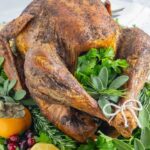
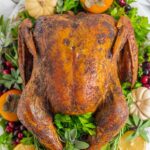
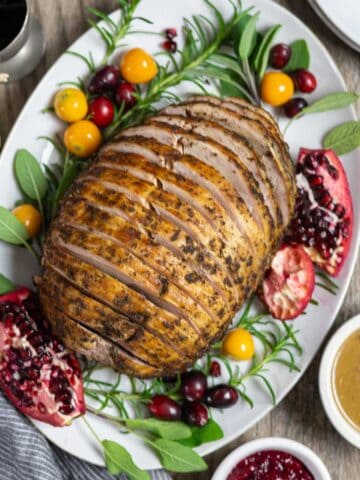
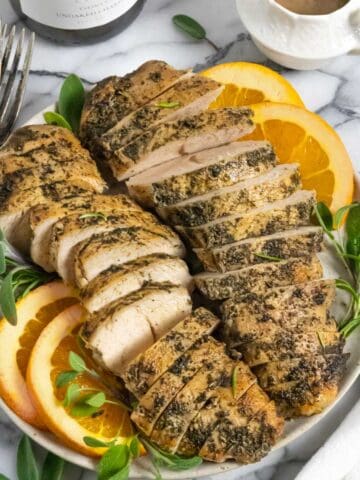
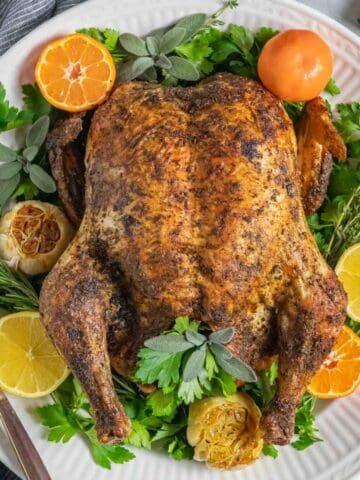
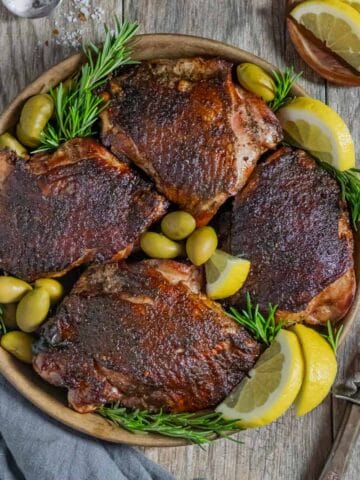
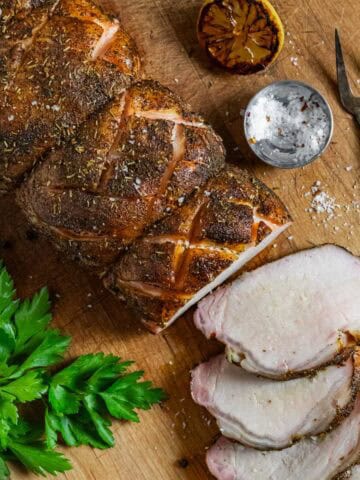
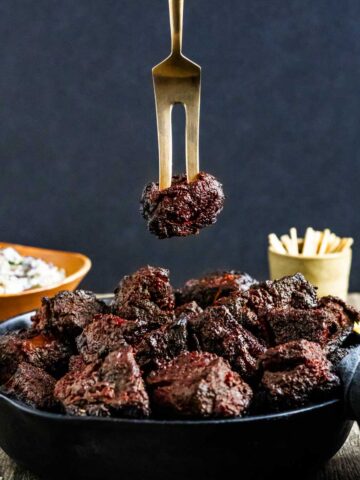
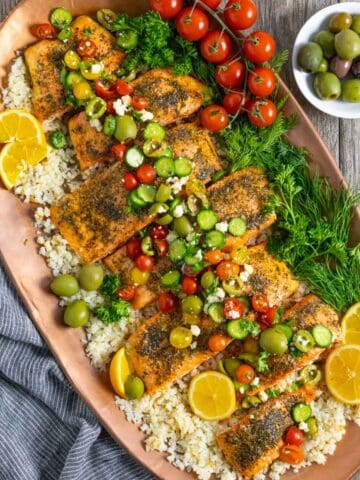
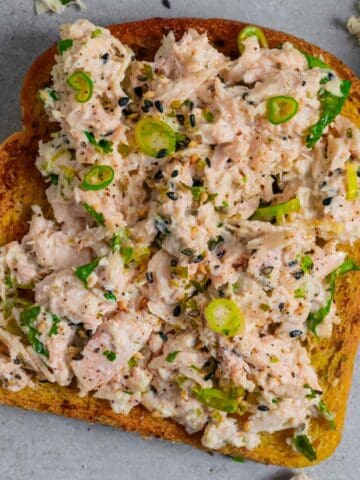
Mary Ann Cook says
my convection oven and air fryer doesn't require preheating. Will that change things?
Tracey Hatch-Rizzi says
Hi Mary Ann,
No, it won't change a thing. As long as the oven is at the correct cooking temperature when the turkey goes in, there would be no changes to the roasting instructions.
Take care,
Tracey
Kathy says
If I set my convection oven to 325 in will adjust to 300 degrees. Should I set it to 350 so it adjusts to 325.
Tracey Hatch-Rizzi says
Hi Kathy,
For best results, I recommend cooking at an oven temperature of 325°F, even if you have to set it at 350°F. If you cook at an oven temp of 300°F, your turkey will just take a little bit longer to cook. I hope this helps!
Happy cooking,
Tracey
Nancy says
This was a perfect turkey recipe - thank you! I only stuffed with an onion and an apple and you could really taste those flavors in the meat. It was delicious!
Tracey Hatch-Rizzi says
Hi Nancy,
I'm so happy you liked it. The aromatics really do make a big difference!
Best,
Tracey
Rachel says
This made the best turkey I've ever had. Easy instructions and I really like your pictures. I used them as a guideline for how to serve it and it was beautiful. Thank you!
Tracey Hatch-Rizzi says
Hi Rachel,
That's awesome and you're welcome! I'm so glad you loved the turkey and my pictures and instructions helped you make it and present it for dinner. I love using my convection oven for roasting!
Happy holidays,
Tracey